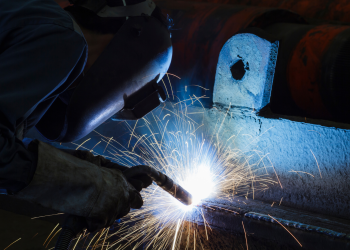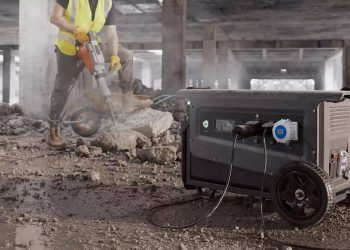Table of Contents

Setting up a home chemistry lab can be rewarding, but it requires care and planning. From gathering the right equipment to establishing safety protocols, every step you take matters in creating a safe, functional lab space.
This guide will help you build a home lab by covering everything from safety basics and essential equipment to beginner-friendly experiments. Following these steps will set you up for successful and safe science exploration.
1. Why Set Up a Home Chemistry Lab?
For students, hobbyists, and science enthusiasts, having a personal chemistry lab offers freedom to explore experiments beyond the classroom. In a home lab, you can study reactions, practice techniques, and apply chemistry concepts hands-on.
Whether you’re interested in basic chemical reactions, material science, or even biochemistry, a home lab can open the door to countless experiments. However, without a lab setup that prioritizes safety, the learning process can quickly become risky.
2. Choosing the Right Space
Selecting an appropriate space for your chemistry lab is essential. Ideally, choose a well-ventilated area that is separate from your living space. A garage, basement, or shed works well because it minimizes the risk of accidental exposure to chemical fumes and spills in common areas. Ventilation is crucial to avoid buildup of fumes, so if you don’t have a naturally ventilated area, consider installing a small exhaust fan.
In this space, laboratory cabinets are invaluable for keeping your equipment and chemicals secure, organized, and protected. They allow you to store items safely, reducing clutter and minimizing the chance of accidental spills or exposure. If possible, choose cabinets that are specifically designed for laboratory use.
Look for cabinets made from durable, chemical-resistant materials to ensure they withstand frequent use and any spills. Catalina Laboratory Products sells the best laboratory cabinets available in the market. Check out their website to choose the right one for your home setup.
Types of Laboratory Cabinets
- Chemical Storage Cabinets: These cabinets are designed to safely store flammable, corrosive, or volatile chemicals. Many come with locking mechanisms for additional safety, ensuring that chemicals are secure when not in use. If possible, look for a cabinet with proper ventilation and one that’s specifically designed for chemical storage.
- General Storage Cabinets: For items like beakers, test tubes, and other equipment, general storage cabinets keep your workspace organized. Opt for cabinets with adjustable shelves to accommodate items of different sizes, from large flasks to smaller tools like pipettes and droppers.
- Safety Cabinets: Some laboratory cabinets come equipped with fire-resistant materials or are designed to store safety equipment, such as gloves, goggles, and first aid kits. Having a dedicated safety cabinet ensures that protective gear and emergency supplies are always within easy reach.
3. Lab Safety Essentials
Safety is the most critical aspect of any lab setup. Follow these basic rules to create a safer environment:
- Personal Protective Equipment (PPE): Always wear safety goggles, gloves, and, ideally, a lab coat. These items provide a basic shield against splashes, spills, and minor accidents.
- Fire Safety: Have a fire extinguisher within reach and know how to use it. Keep it updated and in good condition.
- First Aid Kit: A well-stocked first aid kit is essential. Include antiseptics, bandages, burn cream, and eye wash solution.
- Chemical Storage: Store chemicals in labeled, airtight containers and keep them away from direct sunlight. Avoid storing volatile or flammable chemicals near heat sources.
- Waste Disposal: Dispose of chemical waste responsibly. Some chemicals can be diluted with water and safely poured down the drain, while others require special disposal procedures.
Creating a written list of safety procedures to review before each experiment can serve as a helpful reminder of these practices.
4. Essential Equipment for a Home Chemistry Lab
Having the right equipment allows you to conduct experiments efficiently and safely. Here’s a list of the basic equipment most beginner chemists will need:
- Beakers and Flasks: These are essential for mixing, heating, and measuring chemicals. Consider getting a range of sizes (50 ml, 100 ml, 250 ml).
- Graduated Cylinders: For precise measurements, graduated cylinders are a must. Their narrow shape makes it easy to measure exact volumes of liquids.
- Test Tubes and Rack: Test tubes are ideal for small-scale reactions and heating. A test tube rack is necessary for keeping tubes organized and upright.
- Pipettes and Droppers: Pipettes allow for precise handling of liquids, particularly when you need to add small amounts to a reaction.
- Bunsen Burner or Alcohol Lamp: Heat sources are essential in chemistry labs. Bunsen burners are preferred, but alcohol lamps work if gas is unavailable. Ensure they’re used in a well-ventilated space.
- Thermometer: Choose a digital or glass thermometer that reads up to at least 200°C.
- Stirring Rods and Spatulas: Stirring rods allow for gentle mixing, while spatulas help with measuring and transferring small amounts of solids.
- Digital Scale: A scale that measures to at least 0.01 grams allows you to weigh solids precisely.
Each piece of equipment should be kept clean and in good condition to ensure accuracy in experiments and maintain lab safety.
5. Basic Chemicals for Beginners
Starting with a set of safe, fundamental chemicals can give you the materials you need for various beginner experiments. Consider purchasing small amounts of the following:
- Baking Soda (Sodium Bicarbonate): A versatile chemical useful in acid-base reactions.
- Vinegar (Acetic Acid): Commonly used in household experiments, vinegar can react with baking soda to produce carbon dioxide.
- Hydrogen Peroxide: Useful for oxidation-reduction reactions.
- Salt (Sodium Chloride): A great starting point for studying dissolution and crystallization.
- Sugar (Sucrose): Sugar reactions provide insight into the breakdown of organic compounds.
- Citric Acid: A safe acid used for exploring pH changes.
- Ammonia: Used in cleaning but also for testing pH and reactions with acids.
Always label your chemicals clearly and store them according to safety guidelines. Start with small amounts to reduce risk and make chemical storage easier.
6. Beginner-Friendly Experiments
Once your lab is set up, you’re ready to start experimenting. Here are a few beginner-friendly experiments that help you understand core chemistry concepts:
Experiment 1: Baking Soda and Vinegar Reaction
Mixing baking soda and vinegar is a simple acid-base reaction. When combined, they produce carbon dioxide gas, which creates bubbles and foam. This reaction demonstrates how acids and bases interact and release gas as a byproduct.
Materials: Baking soda, vinegar, small beaker or flask.
Instructions: Pour a small amount of vinegar into the beaker, then add a teaspoon of baking soda. Observe the bubbling reaction and take note of the gas produced.
Experiment 2: Growing Salt Crystals
This experiment is great for exploring crystallization. By dissolving salt in warm water and letting it evaporate slowly, you can grow salt crystals.
Materials: Table salt, warm water, glass container, string.
Instructions: Dissolve as much salt as possible in warm water. Pour the solution into a container, tie a string to a pencil, and place it over the container so the string hangs down into the solution. Wait several days and observe the crystals forming along the string.
Experiment 3: pH Indicator with Red Cabbage
Red cabbage contains anthocyanin, a natural pH indicator that changes color in different pH environments. This experiment allows you to test the acidity or basicity of various household substances.
Materials: Red cabbage, water, vinegar, baking soda, small cups.
Instructions: Chop red cabbage and boil it in water to extract the indicator. Pour the liquid into small cups. Add a few drops of vinegar to one cup and baking soda to another. Observe the color changes that indicate acidic or basic environments.
7. Cleaning Up and Storing Equipment
After each experiment, clean your equipment thoroughly. Residues from previous experiments can interfere with future reactions or lead to contamination. Rinse glassware with distilled water if possible, as it leaves no residue. For stubborn stains, consider using a mild detergent but rinse well to remove any soap residue.
Dry equipment fully before storing to prevent damage and extend its life. Organize equipment in designated storage areas to keep everything easily accessible and reduce clutter. Store chemicals separately from equipment and keep safety equipment, like goggles and gloves, within easy reach.
8. Expanding Your Lab: What’s Next?
Once you’re comfortable with basic experiments, you may want to expand your equipment and chemical collection. Consider acquiring pH meters, burettes, and more complex chemicals for advanced reactions. However, remember that as you add more chemicals and tools, you’ll need to adapt your safety protocols.
Exploring online resources, joining hobbyist groups, or subscribing to chemistry kits are great ways to learn more. Expanding your knowledge and skills can help you safely attempt more complex experiments.
Final Thoughts
Setting up a home chemistry lab can be safe and fulfilling if you follow careful procedures. By choosing a proper workspace, investing in essential equipment, and starting with safe chemicals, you’ll create an environment that supports scientific exploration. Remember, safety always comes first. With a solid foundation, you’ll be able to expand your knowledge, try new experiments, and enjoy the fascinating world of chemistry right at home.







